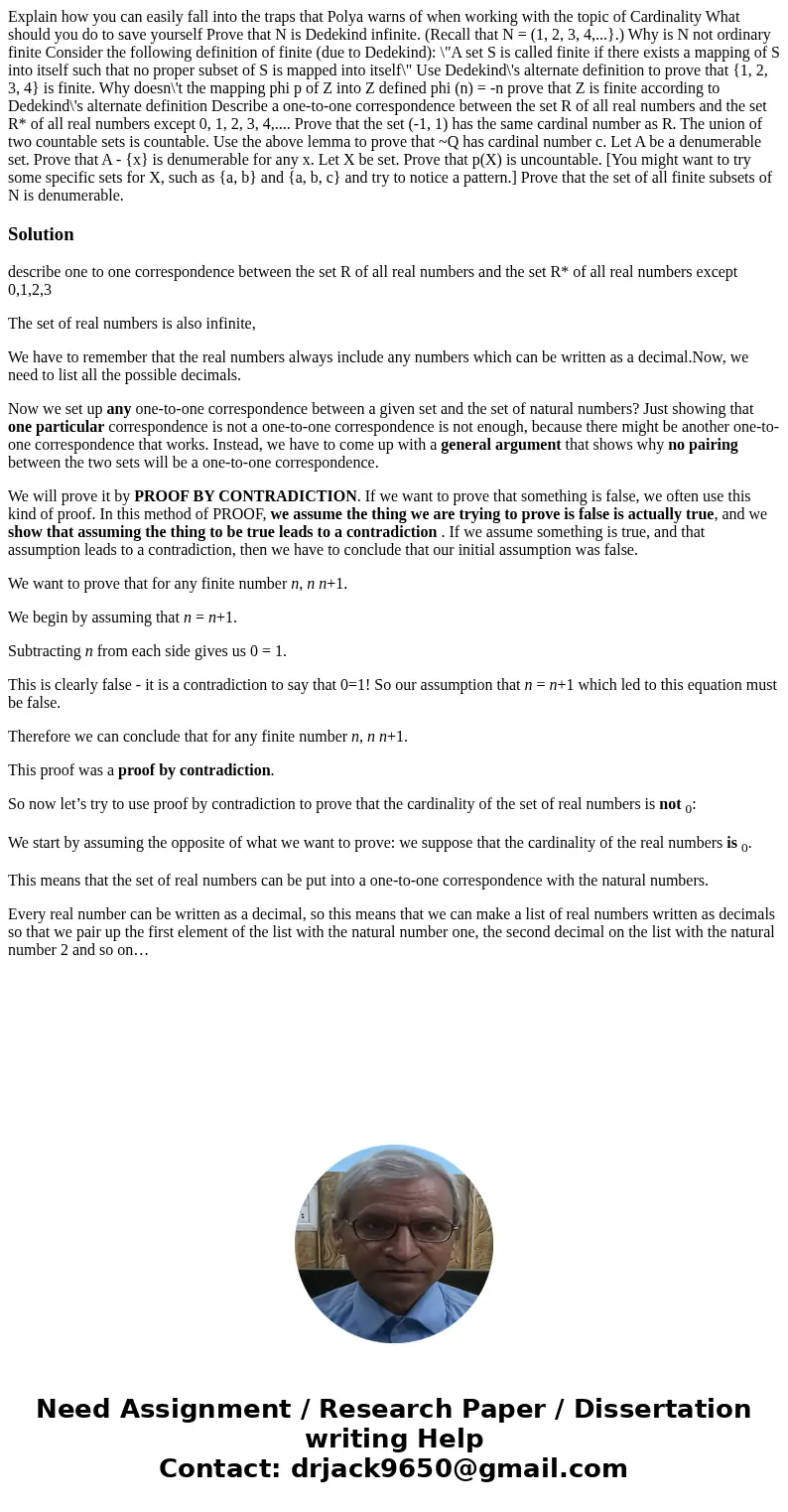Explain how you can easily fall into the traps that Polya wa
Solution
describe one to one correspondence between the set R of all real numbers and the set R* of all real numbers except 0,1,2,3
The set of real numbers is also infinite,
We have to remember that the real numbers always include any numbers which can be written as a decimal.Now, we need to list all the possible decimals.
Now we set up any one-to-one correspondence between a given set and the set of natural numbers? Just showing that one particular correspondence is not a one-to-one correspondence is not enough, because there might be another one-to-one correspondence that works. Instead, we have to come up with a general argument that shows why no pairing between the two sets will be a one-to-one correspondence.
We will prove it by PROOF BY CONTRADICTION. If we want to prove that something is false, we often use this kind of proof. In this method of PROOF, we assume the thing we are trying to prove is false is actually true, and we show that assuming the thing to be true leads to a contradiction . If we assume something is true, and that assumption leads to a contradiction, then we have to conclude that our initial assumption was false.
We want to prove that for any finite number n, n n+1.
We begin by assuming that n = n+1.
Subtracting n from each side gives us 0 = 1.
This is clearly false - it is a contradiction to say that 0=1! So our assumption that n = n+1 which led to this equation must be false.
Therefore we can conclude that for any finite number n, n n+1.
This proof was a proof by contradiction.
So now let’s try to use proof by contradiction to prove that the cardinality of the set of real numbers is not 0:
We start by assuming the opposite of what we want to prove: we suppose that the cardinality of the real numbers is 0.
This means that the set of real numbers can be put into a one-to-one correspondence with the natural numbers.
Every real number can be written as a decimal, so this means that we can make a list of real numbers written as decimals so that we pair up the first element of the list with the natural number one, the second decimal on the list with the natural number 2 and so on…

 Homework Sourse
Homework Sourse